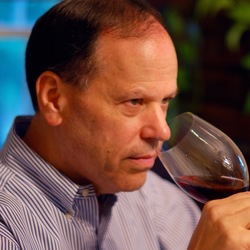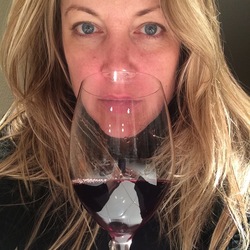10 Essential Facts on Chardonnay
Hubert Lamy
En Remilly Saint-Aubin 1er Cru Chardonnay 2010
Vincent Dauvissat
Vaillons Chablis 1er Cru Chardonnay 2012
2012: Ordered from the wine list at Chez Panisse, so the context behinds there. Silky lemon water was the first impression, which isn't unexpected from youthful Chablis. Citrus notes developing on the nose, and the palate also became more alluring. By the last sip a slightly tangy lemony custard revealed itself, so all in all a great choice to begin the meal. — 9 years ago
Pierre Gimonnet & Fils
Cuvée Cuis 1er Cru Brut Blanc de Blancs Chardonnay Champagne
Since 1750 the Gimonnet family have been vine growers in the village of Cuis, supplying the great Champagne houses with grapes up until the 1930's recession, when sales fell. Today the estate is run by Pierre's sons, Michel and Didier, and in 1987 acquired the house of Larmandier Père et Fils based in Cramant. Classic BdB, light and refreshing, great balance, complex with perfectly ripe fruit, bubbles and mousse. Lingering finish with bright mineral ending. — 7 years ago
Etienne Sauzet
Puligny-Montrachet Chardonnay 2013
Starts of quite shy, but with time and temperature the wine is reaching the sweet spot. Great intensity on both nose and palate, deep and layered with a ripe but fresh fruit, the oak is perfectly integrated and the stone crushed minerality is the icing on the cake that is putting the spell in bound. — 7 years ago
Chateau Montelena
Napa Valley Chardonnay 2014
Founded in 1882 by Alfred Tubbs. In 1972, under the leadership of James Barrett, replanting began. Today Jim's son, Bo, is now its Master Winemaker. Ripe stone fruit aromas with notes of honey. In the palate crisp pear, melon and lemon zest come forth wrapped in vanilla oak. Lingering finish ending with creamy notes fruit ending with hints of pepper spice. — 7 years ago











David T
Independent Sommelier/Wine Educator
I bought my first vintage from this producer & terroir beginning with the 2010 vintage and what a vintage to start. I bought four bottles for right around $50 or a little less. They were so amazing, I drank through them in no time at all. For those of you that read my posts, that’s not normally what I do. I like to drink one & age the rest. Since then, I have looked & looked for more. I’d finally given up hopes of finding more until recently I struck gold. I should have bought all nine bottles but a calmer head prevailed. It’s definitely changed since having it fresh. On the nose, the fruits are slightly macerated. Heather honey, beeswax, golden & green apple, pineapple upside down cake, slight orange citrus blend, mango, glazed nuts, soft, delicate, chalky minerals, a touch of jasmine & yellow lilies. The body is much rounder & thicker than when it was young. Waxy. So, beautifully layered across the palate. Much of the palate matches the nose. Heather honey, beeswax, golden & green apple, apricots, peach, pineapple upside down cake, slight orange citrus blend, mango, slight molasses character & glazed nuts with citrus blossoms, yellow lilies & jasmine. The minerals are much more grippy & bold as they cut across and set on the palate. The acidity round & phat. The texture is amazing as is the length, balance & beautiful, rich, long finish that lasts two-minutes plus. So glad I found more of this wine! Hubert Lamy seriously over deliver the terroir & the price point by a country mile. If you are not buying this wine on pre-arrival, you are missing great wine and excellent value. Can’t say enough good things about it. Especially, the 2010. I expect the 15 to hold similar quality. Photos of; Olivier Lamy, Olivier working in this vineyard, barrel room and their Criots-Bâtard-Montrachet Vineyard. Producer notes and history...There have been Lamy’ s growing vines in St-Aubin since 1640, today it is run by Olivier Lamy. Olivier is a new breed of Burgundian grower keen to progress. He trained Méo-Camuzet & made a number of vintages before taking over in 1996 from his father Hubert. Hubert Lamy used to sell fruit to négociants, but that stopped in 1997. He grubbed up and sold off peripheral vines, keeping only the best and oldest sites. Currently he is experimenting with different planting densities in a quest to capture even greater expression of terroir. The Domaine produces both reds and whites and now has 16.5 hectares of vineyards, mostly in St-Aubin but also own a few parcels in Chassagne-Montrachet and a tiny plot in the Grand Cru Criots-Bâtard-Montrachet. Yields are kept low and recent innovations have been introduced with selection tables in the cuverie to ensure that only the healthiest and ripest grapes are used. His more recent move to reduce the amount of new oak with the introduction of demi-muids 300-600 liter barrels have also helped to improve the wines. Vinification is traditional and the wines are matured with only 20-30% new oak for 12 months before minimal filtration and then bottling. The quality is very high and is often superior to many wines from much more prominent villages that sell at twice the price or more. — 7 years ago